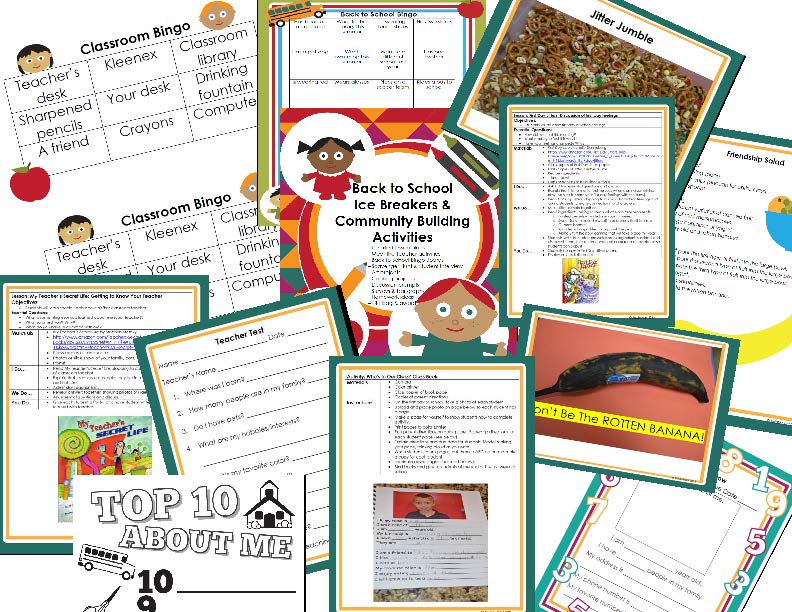You know the horrible feeling when you walk into a room and you don’t recognize a single soul? Even worse, everyone else already knows each other, happily mingling together. Most adults shudder at the thought, yet as teachers, we fail to consider how these situations make our students feel. Many students come to school on the first day without knowing anyone, much less bathroom and cafeteria locations. We fill the first days with procedures, rules, and other endless explanations without taking any time to help students feel comfortable and safe, two basic conditions required for learning.
Here are my top 3 icebreaker activities:
- Student Scavenger Hunt: Make a Bingo board and write an interesting fact in each (Went to Disneyland this summer). Students will hunt for a classmate who matches the fact and record his/her name in the box. This activity gets students moving and talking, both of which they are hesitant to do the first few days. It also allows time to practice important transitions and procedures such as freezing at teacher’s signal, cleaning up and active listening.
- Friendship Web: Students and teacher sit in a large circle. The teacher starts with a ball of yarn, says his/her name and throws the ball to a friend. When the friend catches the yarn, he/she states his/her name and a fun fact about him/herself. Explain that we are building a class web where we are always here to help and support each other. We are all connected in learning. Take a picture and post.
- Friendship Salad: Purchase 3 cans of fruit, bag of marshmallows, 1 large container of yogurt and an old, very rotten banana. Read a friendship book (Horace, Morris But Mostly Delores is a great choice) and stop right after friends get in a fight. Discuss possible strategies to solve the disagreement. Then make the Friendship Salad. Show the bowl and tell students this represents the classroom; it is empty and needs many things such as good friends, happy days and lots of learning. Pour in one can of fruit—these are kind kids in the room who help others (can elaborate). Pour in the second can of fruit—these are the hard workers in our room—they always give their best effort and complete their work. Pour in the third can—this represents students who share. Dump in the bag of marshmallows—these represent respectful, polite words used with each other. Add the yogurt—this is for smooth, happy days. Stir together and walk around to let the kids see and sniff. Then show, the secret ingredient—the rotten banana! Start to peel and put in and students will start to scream in disgust. Explain that it only takes one person with rotten behavior or a rotten attitude to ruin the whole classroom. Extend the explanation to the story (i.e., Horace and Morris were being rotten friends when they excluded Delores). The moral of the lesson—don’t be a rotten banana!
Like these ideas? Check out our Back to School Ice Breakers and Community Building Activities for 85 pages of engaging plans and exercises.

